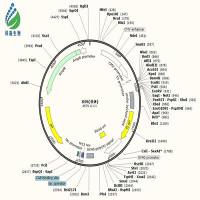Eukaryotic cell biosensor The Cytosensor microphysiometer
互联网
618
The Cytosensor, a silicon-based microphysiometer system, is a light-addressable potentiometric biosensor (LAPS) that detects functional responses of living cells in minutes. Thus, unlike other biosensors that detect and quantitate an analyte, the Cytosensor reports on the effect of an analyte on biologic function. It is based on detection of the rate at which cells excrete acidic metabolites, which is closely linked to the rate at which they convert nutrients to energy (1 ). This is possible because during the experiment the cells are maintained in low buffered medium that contains glucose. This is metabolized in the cells to lactic acid by glycolysis (the most acidifying process in terms of protons produced by turnover of ATP) or oxidized to CO2 by respiration, with the carbonic acid dissociated and excreted into the medium. Thus, any event that perturbs cellular ATP levels changes energy metabolism and consequently acid secretion. Since cultured cells tend to depend more on glycolysis than on respiration, lactic acid predominates. Thus, there is a direct connection between cellular metabolic rate and the rate of acidification of the medium bathing a cell. The Cytosensor provides a nondestructive method of monitoring cellular acidification rates on a time scale of seconds to minutes (2 ). A change of 0.01 pH can be detected without any significant change in cell physiology.








